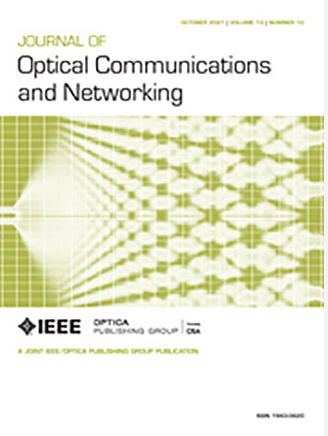Interference detection in spectrum-blind multi-user optical spectrum as a service
IF 4
2区 计算机科学
Q1 COMPUTER SCIENCE, HARDWARE & ARCHITECTURE
引用次数: 0
Abstract
With the growing demand for high-bandwidth, low-latency applications, optical spectrum as a service (OSaaS) is of interest for flexible bandwidth allocation within elastic optical networks (EONs) and open line systems (OLSs). While OSaaS facilitates transparent connectivity and resource sharing among users, it raises concerns over potential network vulnerabilities due to shared fiber access and inter-channel interference, such as fiber nonlinearity and amplifier-based crosstalk. These challenges are exacerbated in multi-user environments, complicating the identification and localization of service interferences. To reduce system disruptions and system repair costs, it is beneficial to detect and identify such interferences in a timely manner. Addressing these challenges, this paper introduces a machine learning (ML)-based architecture for network operators to detect and attribute interferences to specific OSaaS users while being blind to the users’ internal spectrum details. Our methodology leverages available coarse power measurements and operator channel performance data, bypassing the need for internal user information of wide-band shared spectra. Experimental studies conducted on a 190 km optical line system in the Open Ireland testbed, with three OSaaS users, demonstrate the model’s capability to accurately classify the source of interferences, achieving a classification accuracy of 90.3%.频谱盲多用户频谱业务中的干扰检测
随着高带宽、低延迟应用需求的增长,频谱即服务(OSaaS)在弹性光网络(EONs)和开放线路系统(OLSs)内的灵活带宽分配备受关注。虽然OSaaS促进了用户之间的透明连接和资源共享,但由于共享光纤接入和信道间干扰(如光纤非线性和基于放大器的串扰),它引发了对潜在网络漏洞的担忧。这些挑战在多用户环境中更加严重,使服务干扰的识别和定位复杂化。为了减少系统中断和系统修复成本,及时检测和识别这些干扰是有益的。为了解决这些挑战,本文引入了一种基于机器学习(ML)的架构,供网络运营商在不了解用户内部频谱细节的情况下检测特定OSaaS用户的干扰并将其归因于特定OSaaS用户。我们的方法利用了可用的粗功率测量和运营商信道性能数据,绕过了对宽带共享频谱的内部用户信息的需要。在爱尔兰开放试验台的190公里光学线路系统上进行的实验研究,与三个OSaaS用户一起,证明了该模型准确分类干扰源的能力,分类准确率达到90.3%。
本文章由计算机程序翻译,如有差异,请以英文原文为准。
求助全文
约1分钟内获得全文
求助全文
来源期刊
CiteScore
9.40
自引率
16.00%
发文量
104
审稿时长
4 months
期刊介绍:
The scope of the Journal includes advances in the state-of-the-art of optical networking science, technology, and engineering. Both theoretical contributions (including new techniques, concepts, analyses, and economic studies) and practical contributions (including optical networking experiments, prototypes, and new applications) are encouraged. Subareas of interest include the architecture and design of optical networks, optical network survivability and security, software-defined optical networking, elastic optical networks, data and control plane advances, network management related innovation, and optical access networks. Enabling technologies and their applications are suitable topics only if the results are shown to directly impact optical networking beyond simple point-to-point networks.

 求助内容:
求助内容: 应助结果提醒方式:
应助结果提醒方式:


